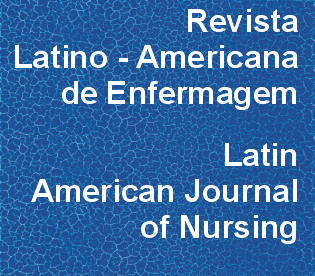Mudanças nas condições de fragilidade e componentes do fenótipo em idosos após hospitalização
DOI:
https://doi.org/10.1590/1518-8345.1417.2905Palavras-chave:
Idoso Fragilizado, Estudos Longitudinais, Enfermagem GeriátricaResumo
Objetivo: descrever as mudanças nas condições de fragilidade ao longo de um ano após a alta hospitalar, e verificar as variáveis preditoras da mudança das condições de fragilidade e dos componentes do fenótipo de fragilidade, segundo grupos de piora, melhora e estabilidade. Método: inquérito longitudinal, realizado com 129 idosos. Utilizou-se formulário estruturado para dados socioeconômicos e saúde, escalas (Depressão Geriátrica Abreviada, Katz, Lawton e Brody) e fenótipo de fragilidade, segundo Fried. Procederam-se às análises descritiva e modelo de regressão logística multinomial (p<0,05). Resultados: constatou-se que 56,7% dos idosos mudaram sua condição de não frágeis para pré-frágeis, não ocorrendo mudança dos não frágeis para frágeis. Observou-se o óbito entre idosos frágeis e pré-frágeis. No grupo de piora, o aumento do número de morbidades foi preditor para exaustão e/ou fadiga, enquanto que, no grupo de melhora, o aumento na dependência das atividades instrumentais de vida diária foi preditor para a perda de peso, e a diminuição dos escores do indicativo de depressão para o baixo nível de atividade física. Conclusão: houve maior percentual de mudança na condição de idosos não frágeis para pré-frágeis e as variáveis de saúde foram preditoras apenas para os componentes do fenótipo de fragilidade.Downloads
Os dados de download ainda não estão disponíveis.
Downloads
Publicado
2017-01-01
Edição
Seção
Artigos Originais
Licença
Os direitos autorais são de propriedade exclusiva da revista, transferidos por meio da Declaração de Transferência de Direitos Autorais (presente no Formulário Individual de Declarações) assinada pelos autores. Para a utilização dos artigos, a RLAE adota a Licença Creative Commons, CC BY-NC Atribuição não comercial (resumo ou código completo da licença). Com essa licença é permitido acessar, baixar (download), copiar, imprimir, compartilhar, reutilizar e distribuir os artigos, desde que para uso não comercial e com a citação da fonte, conferindo os devidos créditos autorais a Revista Latino-Americana de Enfermagem. Nesses casos, nenhuma permissão é necessária por parte dos autores ou dos editores.Como Citar
Mudanças nas condições de fragilidade e componentes do fenótipo em idosos após hospitalização. (2017). Revista Latino-Americana De Enfermagem, 25, e2905-. https://doi.org/10.1590/1518-8345.1417.2905



